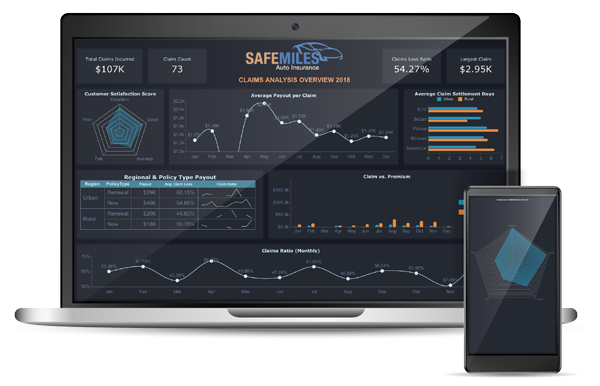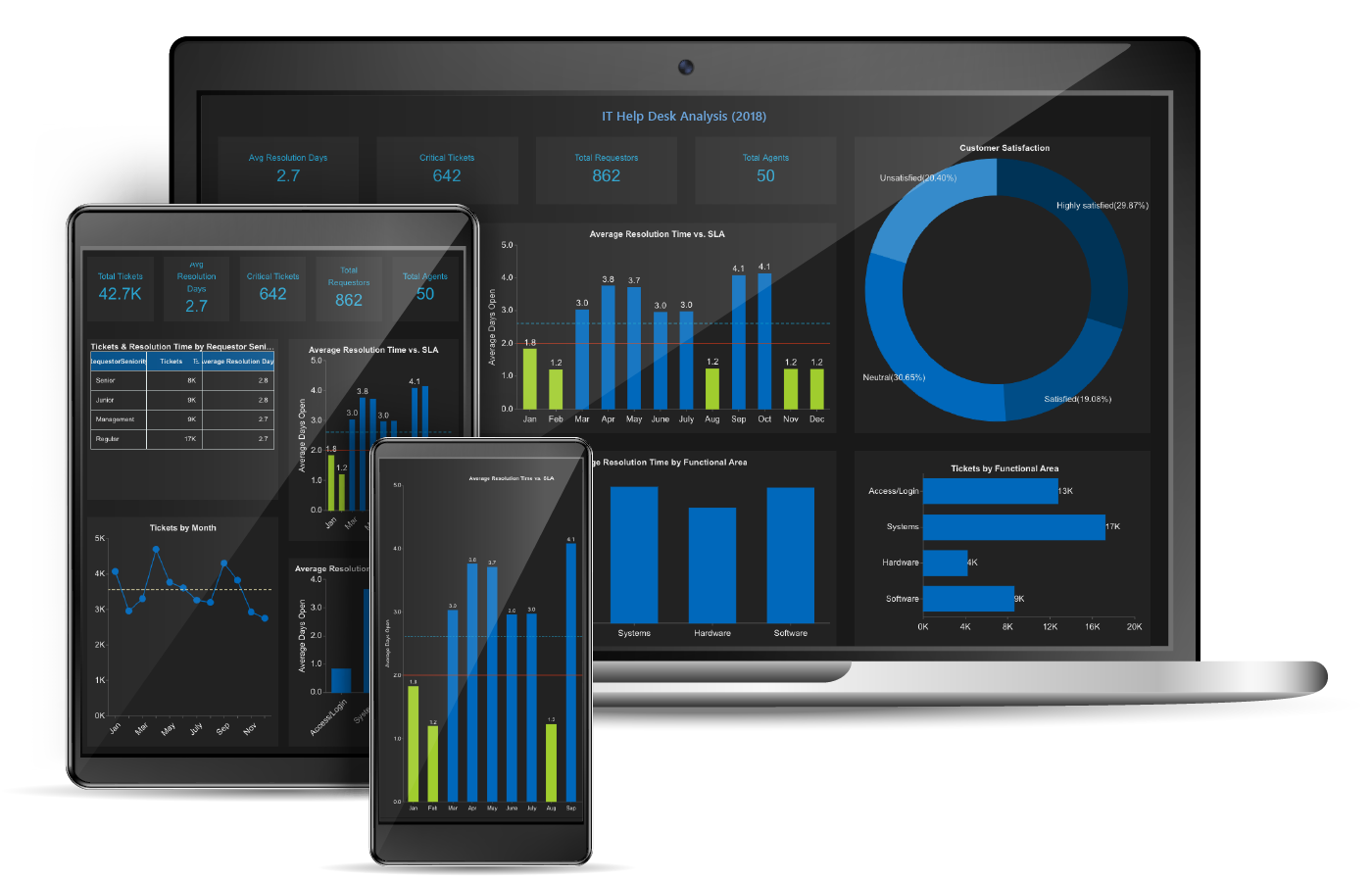Scorecards and dashboards are similar business intelligence tools, but they serve different purposes and do their best work in different situations. When it comes to modern implementations, such as self-service BI, embedded BI and interactive dashboards, the differences become even more important.
In the broadest possible sense, a scorecard is a tool for managing tactical decisions. A dashboard, on the other hand, is a tool for keeping an eye on how closely the real-world situation is adhering to your strategic plan. In the real world, of course, few situations are ‘only’ strategic or tactical, and these tools’ actual utility is broader than these simple categories suggest.
What is a scorecard?
A scorecard is simply a tactical aid. It helps make sure your systems and processes are aligned with your objectives and can help spot where the problems are.
Scorecards can also be a guide for improving your processes. That said, scorecards can – and should – be used to inform strategy efforts as well. But their primary utility is ‘down in the nitty gritty.’
When to use a scorecard solution
A scorecard is essentially a visualization tool. It might be set up to tell you if you are making the right products for your market, whether your products are truly competitive with those of your rivals, how effective your sales team is, or how profitable your offerings really are. A good scorecard solution can also help your team target key objectives and keep track of their progress. This ability to visualize their performance can be a huge motivator.
Essentially, you use a scorecard to tinker with the process to bring it into alignment with strategy, not the other way around.
What is a dashboard?
By comparison, dashboards are used to help you get ‘the big picture’ by visualizing large amounts of data. They can usually be configured to focus on certain metrics and types of data to help you understand how a particular project or issue is progressing, or to look at trends at particular periods of time.
It is called a dashboard because it serves the same function as the gages and lights on the dashboard of your car – at a glance, you can see the numbers for your speed, RPMs, fuel efficiency, etc. All the information you need to be aware of while you’re driving – making strategic decisions. When it is time to take the car into the shop – make tactical decisions and changes in your process, the dashboard is a great deal less useful.
How can interactive dashboards be best put to use?
The data visualized on an interactive dashboard might help you spot changes in the efficiency of your production facility, or spot a sudden spike in error rates. You might use it to see how many calls your call center is processing compared to the same time last week or last month. It might track workflow or on-time vs late deliveries.
Of course, for the visualizations to mean anything, you’ll have to have access to accurate, up-to-the-minute business intelligence. That comes from your BI solutions and data-tracking applications. If you want to be certain you have the best, consider Wyn Enterprise’s interactive dashboard solutions.
In conclusion
Scorecards and dashboards can both be incredibly useful, but each has its place in the grand ecology of business decision-making aids. Always use the right tool for the job at hand.
Speaking of using the right tools, you can always turn to Wyn for your business intelligence needs:
· Self-Service BI Solutions - Wyn Enterprises has become known for our self-service BI implementations, including dashboards, scorecards and in-depth reporting tools.
· Embedded BI - Wyn also offers a range of ways to integrate your existing business applications and solutions into our dashboarding and reporting systems, via our unique, flexible API.































